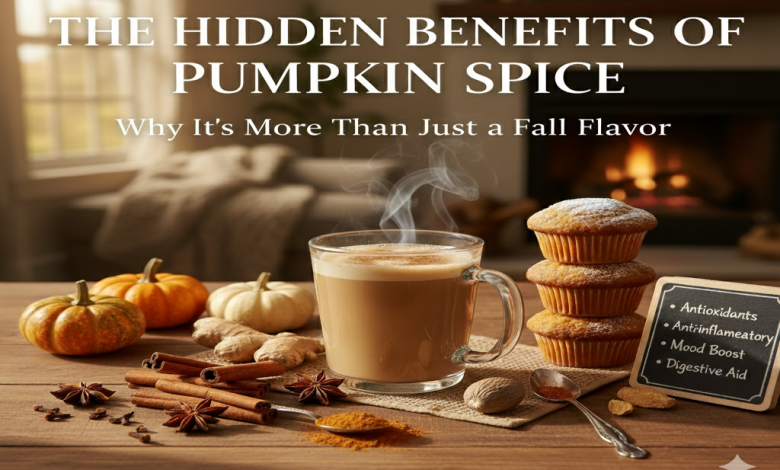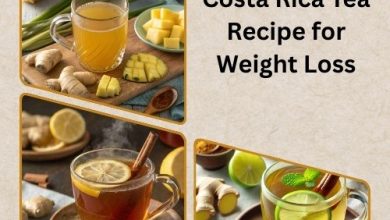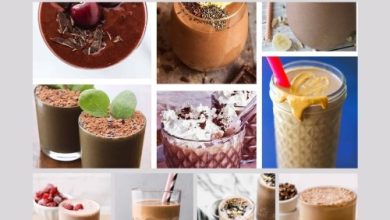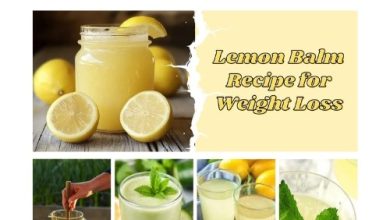The Hidden Benefits of Pumpkin Spice: Why It’s More Than Just a Fall Flavor

Pumpkin spice is everywhere once autumn rolls around—lattes, pies, candles, even cereal. But beyond its cozy aroma and warm, nostalgic appeal, pumpkin spice has a surprising number of health benefits that many people don’t realize. Nutritionists and flavor experts alike are discovering that pumpkin spice isn’t just about seasonal delight—it can play a role in wellness, mood, and even disease prevention. We’ll explore what pumpkin spice really is, its hidden benefits, and how to use it smartly year‑round.
What Is Pumpkin Spice?
Pumpkin spice (also called “pumpkin pie spice”) is a spice blend traditionally used in pumpkin pies and other fall desserts. Common ingredients include:
- Cinnamon
- Nutmeg
- Ginger
- Cloves
- Allspice (sometimes)
Depending on the recipe or manufacturer, proportions vary. Some blends may include cardamom, mace, or sugar. Importantly, pumpkin spice does not necessarily include pumpkin itself—it’s the spices that give the flavor.
Because each spice has its own bioactive compounds, combining them produces more than just a flavor—it yields synergistic health benefits.
Key Ingredients & Their Health Profiles
Let’s look at the main spices in pumpkin spice and the nutritional / therapeutic compounds they carry.
| Spice | Key Bioactives / Compounds | Traditional Uses & Potentials |
| Cinnamon | Cinnamaldehyde, polyphenols, cinnamic acid | Known for its anti‑inflammatory, antimicrobial, and blood sugar regulation effects. |
| Nutmeg | Myristicin, elemicin, antioxidants | Often used for digestion, mild pain relief, and mood elevation (in small doses). |
| Ginger | Gingerols, shogaols | Excellent for nausea, digestion, anti‑inflammatory, and warming effect. |
| Cloves | Eugenol, tannins, flavonoids | Strong antibacterial/antiviral properties; antioxidant; dental health (clove oil). |
| Allspice (if included) | Eugenol, methyl eugenol | Digestive aid, anti‑inflammatory, and pain relief have been historically used. |
When you bring all of these together, pumpkin spice becomes more than “just a flavor” — it becomes a multifaceted wellness blend.
The Hidden Health Benefits
Here are the key benefits that pumpkin spice (or its component spices) offers beyond aroma and taste.
a) Anti‑Inflammatory Effects
Inflammation underlies many chronic diseases—arthritis, heart disease, and certain cancers. The bioactive compounds in pumpkin spice:
- Cinnamon’s cinnamaldehyde helps reduce inflammation markers.
- Ginger has well‑studied anti‑inflammatory effects (gingerols).
- Clove (with eugenol) is also potent in reducing inflammatory responses.
Regular, moderate consumption of these spices can help lower systemic inflammation.
b) Digestive Support
Spices like ginger and cloves are classic digestive aids:
- Ginger helps motility (movement) in the gut, alleviating nausea, bloating, and gas.
- Cloves and allspice have carminative properties—they help reduce gas and digestive discomfort.
- Nutmeg, in small amounts, may help with digestion and relieve indigestion or cramps.
c) Antioxidant Power
Oxidative stress (free radicals) contributes to aging, cellular damage, and disease. The spices in pumpkin spice are rich in antioxidants:
- Cinnamon has powerful polyphenols.
- Cloves are among the highest in antioxidant capacity among common spices.
- Ginger contributes both antioxidant and anti‑free radical functions.
This helps protect cells, possibly slows aging, and reduces the risk of chronic diseases.
d) Mood & Cognitive Boost
Surprisingly, pumpkin spice may have mental health benefits:
- Nutmeg has mild mood-elevating properties (though it must be used sparingly).
- Cinnamon may help enhance brain function; some studies suggest effects on memory and processing.
- The smell itself (aroma of spice) is linked with comfort, nostalgia, stress reduction—this sensory effect can improve mood, reduce anxiety.
e) Immune System Support
The immune system benefits from certain nutrients and compounds:
- Spices like cloves, cinnamon, and ginger have antimicrobial properties, which may help the body fight infections.
- Ginger is often used to treat cold symptoms.
- The antioxidants in these spices help reduce oxidative stress, supporting immune cell function.
f) Possible Metabolic Benefits
Some studies show that cinnamon and ginger may help regulate blood sugar, lipid (cholesterol) levels, and possibly support weight management:
- Cinnamon has been studied for its ability to improve insulin sensitivity.
- Ginger may help with metabolic rate, improving digestion, and possibly appetite suppression.
- When used instead of sugar or sweeter spices, pumpkin spice can flavor foods without needing extra sugar, helping reduce added sugar intake.
How Pumpkin Spice Compares to Other Spices & Flavorings
When you compare pumpkin spice to other popular flavorings or spices (vanilla extract, mint, chocolate, flavored syrups), several advantages appear:
- Lower sugar or no sugar needed: Many flavorings rely on syrups or sugar; pumpkin spice adds flavor without sugar.
- More compounds with health benefits: While vanilla has its benefits, the mix of several spices in pumpkin spice offers a more complex profile of antioxidants, anti‑inflammatory agents, etc.
- Versatile usability: Pumpkin spice works well with both sweet and savory foods—oats, teas, roasted vegetables, stews—whereas some flavorings are limited.
- Seasonal, psychologically beneficial: The aroma of pumpkin spice often evokes positive memories and feelings, which can enhance the food experience.
Smart Ways to Incorporate Pumpkin Spice into Your Diet
To get the hidden benefits (without overdoing it), use these practical, tasty ways:
Homemade spice blend: Make your own pumpkin spice so you control quality and sugar level. Mix cinnamon, nutmeg, ginger, cloves, and allspice in your preferred proportions. Store in an airtight container.
Add to breakfast:
Stir into oatmeal or porridge.
Sprinkle over yogurt with fruit.
Mix into pancake or waffle batter.
Flavor your drinks:
Pumpkin spice tea (just spice + hot water or spiced tea bags).
Add to coffee or latte (use non‑sweetened milk or milk alternative to keep sugar lower).
Smoothies: A dash of pumpkin spice can complement banana, pumpkin puree, and protein powder.
Savory uses:
Roast vegetables (sweet potatoes, squash) with pumpkin spice plus olive oil.
Make a pumpkin spice rub for meats (chicken, pork) or tofu.
Soups: A pinch of pumpkin or butternut squash soup adds depth.
Desserts—with moderation:
Pumpkin pie, muffins, cookies—but try to reduce sugar, use whole‑grain flours.
Healthy baked apples or baked pears with pumpkin spice and a drizzle of honey.
Aroma therapy & well‑being:
Use spice in potpourri or simmer pots (lemon + spice + water) for a comforting aroma in the home.
Bake a spice bread or muffins and share—smell + social and food combine for a mood boost.
Potential Side‑Effects & What to Watch Out For
Even though pumpkin spice has many benefits, moderation and awareness are key.
- Overuse and dose sensitivity: Some spices (nutmeg, especially) can be toxic in large doses; sticking to spice blend recipes is safer.
- Allergies / Sensitivities: People may be allergic to certain spices. Cloves, nutmeg, and cinnamon can trigger reactions.
- Interactions with medications: For example, cinnamon in large quantities might interact with blood sugar medications, anti‑coagulants, etc. If you have a health condition or are on medications, check with your doctor.
- Gastric irritation: Spicy and warming spices may irritate the stomach lining in sensitive individuals (acid reflux, ulcers).
- Hidden sugar & calories: Pumpkin spice flavored products (lattes, desserts) often have sugar, fats, etc. The benefits are reduced if you load them with syrups, cream, or sweeteners.
FAQs
Q1: Is pumpkin spice healthy without pumpkin?
Yes. The health benefits mostly come from the spice mix itself, not pumpkin. Pumpkin adds fiber, vitamins, etc., but the spices are where much of the bioactive compounds lie.
Q2: Can I use pumpkin spice year‑round, or is it only for fall?
You can use it year‑round. Though culturally autumnal, the spices are appropriate any time—in drinks, meals, desserts—whenever you like. Just keep in mind balancing other flavors.
Q3: How much pumpkin spice is safe per day?
There is no universal standard, but small amounts—¼ to ½ teaspoon per recipe or drink—are typical and safe. For nutmeg especially, avoid large doses.
Q4: Does pumpkin spice help with weight loss?
It can assist indirectly—adding flavor without sugar, helping digestion, possibly stabilizing blood sugar—but no single spice is a “magic bullet.” A balanced diet + exercise remains essential.
Q5: Are there studies that prove these benefits?
Yes, there are studies on individual spices (cinnamon, ginger, cloves) showing antioxidant, anti‑inflammatory, and digestive benefits. The blend has less research, but it’s reasonable to infer cumulative benefit from its parts.
Conclusion
Pumpkin spice isn’t just a cozy, seasonal flavor—it’s a union of spices that carry real health potential. From anti‑inflammatory properties to mood‑lifting aroma, digestive support, immune boosting, and metabolic help, there’s more to this blend than pumpkins and pie. By using pumpkin spice smartly—moderately, with high‐quality spices, and in healthy recipes—you can enjoy its flavors and its benefits.
So next time you reach for that pumpkin spice latte or sprinkle a bit on your oatmeal, remember you’re doing more than celebrating fall. You’re tapping into centuries of spice wisdom, aromatic comfort, and health‑promoting tradition.
Why not try adding a pinch today and noticing how it makes your food, mood, or day just a little more warming, uplifting, and healthful?




